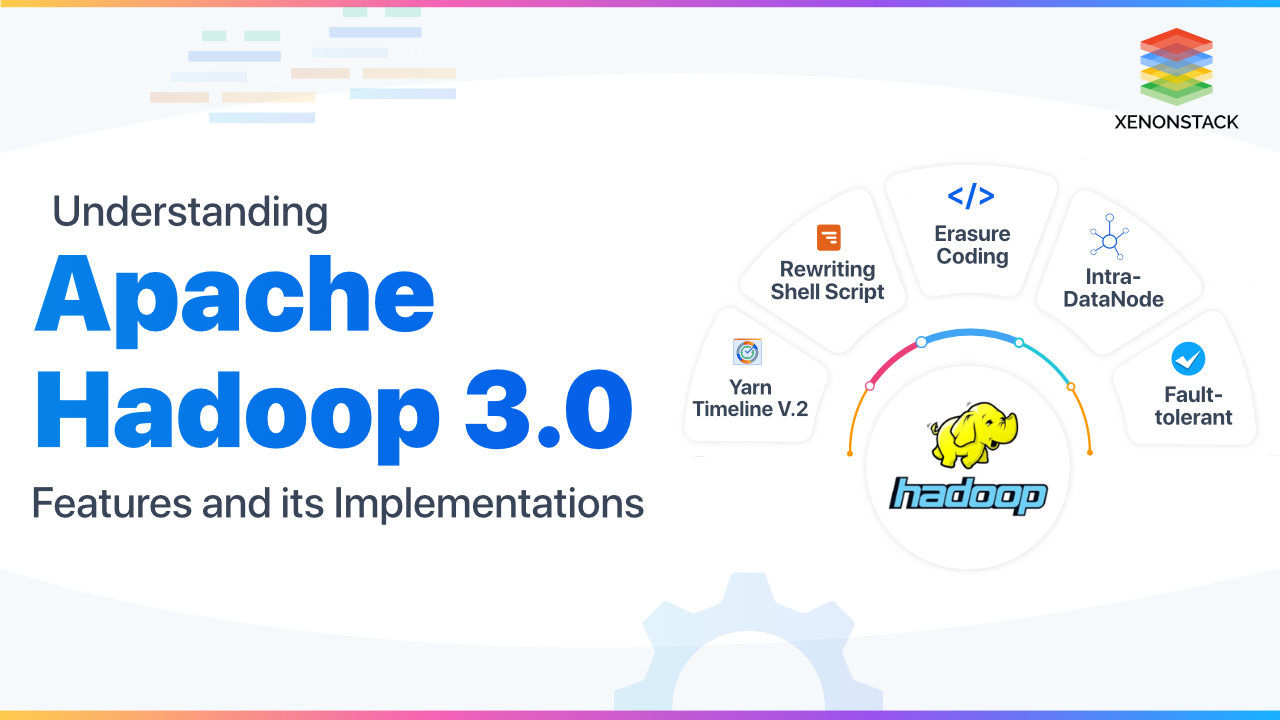
What is Apache Hadoop?
Apache Hadoop is a framework that allows storing large Data in distributed mode and allows for the distributed processing on that large datasets. It designs such a way that scale from a single server to thousands of servers. Hadoop itself designed to detect the failures at the application layer and handle that failure. Hadoop 3.0 is major release after Hadoop 2 with new features like HDFS erasure coding, improved performance and scalability, multiple NameNodes and many more.Big Data Security should meet four critical criteria – perimeter security and authentication framework, authorization and access, data privacy, and audit and reporting. Click to explore about, Big Data Security Management
What are the benefits of Apache Hadoop 3.0?
- Support multiple standby NameNodes.
- Supports multiple NameNodes for multiple namespaces.
- Storage overhead reduced from 200% to 50%.
- Support GPUs.
- Intra-node disk balancing.
- Support for Opportunistic Containers and Distributed Scheduling.
- Support for Microsoft Azure Data Lake and Aliyun Object Storage System file-system connectors.
Why Hadoop 3.0 Matters?
- It involves minimum Runtime Version for it is JDK 8.
- Ensures Coding in HDFS.
- Hadoop Shell scripting rewrite.
- MapReduce task Level Native Optimization.
- Introduces more powerful YARN in Hadoop 3.0.
- Agility & Time to Market.
- Total Cost of Ownership.
- Scalability & Availability.
Enabling Big Data on Kubernetes is a good practice for the transition of smooth data. Click to explore about, Enabling Big Data Applications on Kubernetes
How Hadoop 3.0 works?
Hadoop works on Distributed Processing for a large number of data sets across the cluster of the commodity servers and also works on multiple machines. The process of any data is like that when the client submits data and the program to the Hadoop. Then HDFS stores the data while MapReduce process the data.HDFS stores the elements of Hadoop. Two daemons are run for HDFS -- Namenode runs on the master node.
- Datanode runs on the slave.
- A resource manager splits the job submitted by the client into small tasks.
- Node manager performs tasks in parallel in a distributed manner on data stored in data nodes.
Big Data Platform focuses on providing their user with efficient analytics tools for massive datasets. Click to explore about, Big Data Platform
How to adopt Hadoop 3.0?
Hadoop runs on Unix/Linux based Operating Systems. However, it can also work with Windows-based machines which is not recommended. There are three different modes of Hadoop Installation -- Standalone Mode.
- Pseudo-Distributed Mode.
- Fully Distributed Mode.
Standalone Mode
- Hadoop default mode.
- HDFS not utilized.
- The local file system used for input and output.
- Used for debugging purpose.
- No Configuration has required in 3 Hadoop(mapred-site.xml,core-site.xml, hdfs-site.xml) files.
- This is much faster than the Pseudo-distributed mode.
Pseudo-Distributed Mode
- In this configuration is required in given three files for this mode.
- HDFS required only one Replication factory.
- In this one node will be used as Master Node / Data Node / Job Tracker / Task Tracker.
- Real Code used for the test in HDFS.
- Pseudo-distributed cluster is a cluster where all daemons are running on one node itself.
Fully Distributed Mode
- This mode is a Production Phase mode.
- In this data are used and distributed across many nodes.
- In this mode, different Nodes used as Master Node / Data Node / Job Tracker / Task Tracker.
- Most of Companies Prefer Fully-distributed mode.
Data Governance used in an organization at a maturity level to make sure critical and vital data is managed and protected. Click to explore about, Big Data Governance Tools
What are the best practises of Hadoop 3.0?
Better-quality commodity servers to make it cost-efficient and flexible to scale out for complex business use cases. It is one of the best configurations for this architecture is to start with SIX core processors, 96GB of memory and 104TB of local hard drives. Hadoop is a good way of configuration but not an absolute one. By using the above configuration, it gives faster and efficiently processing of data, move the processing near data instead of separating the two. By the above Config Hadoop scales and performs better with local drives so use Just a Bunch of Disks (JBOD) with replication instead of a redundant array of independent disks (RAID). For multi-tenancy by sharing the compute capacity with the capacity scheduler and share HDFS storage we Design the Hadoop architecture.The major reason behind why companies collect Big Data is to know their customer's experience which indirectly helps in improving the organization's relationships with their customers. Click to explore about, Big Data Use Cases in Healthcare
Essential Tools for Apache Hadoop
- HDFS
- Apache HBase
- Apache Hive
- Sqoop
- Apache Pig
- Apache Zookeeper
- NoSQL
- Apache Mahout
- Apache Lucene Lucene/Solr
- Apache Avro
- Apache Oozie
- GIS tools
- Apache Flume
- Apache Ambari
- MapReduce
- Impala
- MongoDB

Managed services for Enterprises to facilitate Automated Security Alerts, Single Click Deployments and Monitoring Solutions. Click for our Big Data Consulting Services
Concluding Hadoop 3.0
Apache Hadoop is a framework that enables storing large Data in distributed mode and allows for the distributed processing on that large datasets. It designs such a way that scale from a single server to thousands of servers. To know more about Hadoop 3.0, you must learn and explore below pointers:- Learn more about Data Analytics Infrastructure
- Explore more about Hadoop Data Ingestion Framework
- Read more about Open Source Big Data Tools
.webp?width=1921&height=622&name=usecase-banner%20(1).webp)


